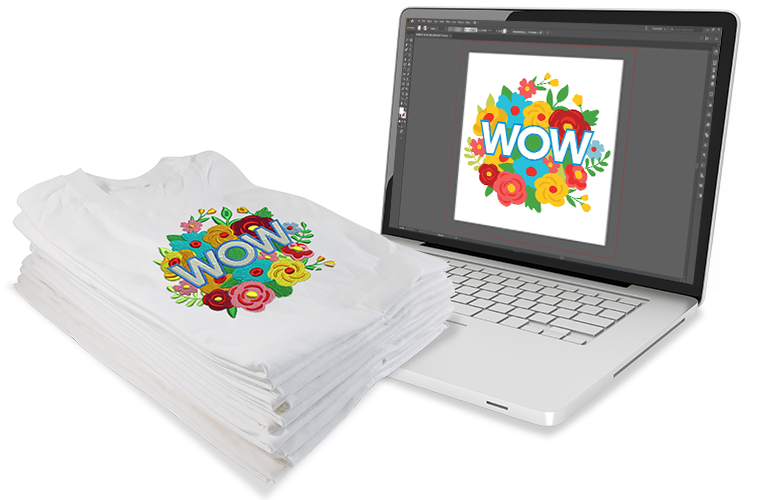Top Notch Digitizing for Embroidery: Specialist Workmanship
Top Notch Digitizing for Embroidery: Specialist Workmanship
Blog Article
Mastering the Needlework Digitizing Refine: Your Ultimate Overview
Embroidery digitizing is a precise craft that requires precision and expertise to convert detailed designs into digital formats for machine needlework. As craftsmens get started on this journey to grasp the embroidery digitizing process, an extensive understanding of the basics establishes the structure for quality.

Understanding Embroidery Digitizing Basics
Embroidery digitizing fundamentals develop the foundation upon which elaborate designs are translated into machine-readable formats for precise sewing. This first action in the needlework digitizing procedure is vital for making certain that the last embroidered product is a faithful depiction of the initial style. Comprehending embroidery digitizing basics involves realizing vital ideas such as stitch types, stitch direction, thickness, rug, and pull compensation.
Sew kinds play an important role in determining the aesthetic and textural result of the embroidered layout. By selecting the ideal stitch kind, whether it be satin, fill, or running stitch, digitizers can accomplish the desired result and improve the overall top quality of the needlework. Additionally, sew instructions influences the circulation and dimension of the layout, while thickness establishes the spacing and protection of the stitches.
Additionally, padding stitching provides security to the design by safeguarding the fabric and preventing distortion throughout the embroidery procedure. Pull payment is an additional necessary consideration to neutralize the all-natural tendency of fabric to contract when stitched. Grasping these embroidery digitizing fundamentals is basic for producing professional-quality stitched products.
Choosing the Right Digitizing Software Application
Picking the appropriate digitizing software application is an essential decision that considerably affects the performance and quality of the embroidery digitizing process. Digitizing for Embroidery. When selecting the ideal digitizing software, it is important to take into consideration variables such as the intricacy of designs you plan to create, the user-friendliness of the software, the level of client support used, and the compatibility with your needlework maker
There are numerous digitizing software program alternatives available on the market, ranging from basic programs for beginners to advanced software for professional digitizers. Some popular choices consist of Wilcom EmbroideryStudio, Hatch Needlework Software Program, and PulseID. These software application bundles use a wide variety of devices and functions to assist you create intricate layouts with convenience.
Prior to making a choice, it is a good idea to check out the different software program alternatives with totally free tests or demonstrations to identify which one best matches your requirements. Additionally, reading testimonials and seeking Read More Here recommendations from experienced digitizers can give useful insights into the toughness and weak points of each software (Digitizing for Embroidery). By thoroughly evaluating your needs and comparing the attributes of different digitizing software, you can make an enlightened choice that boosts your needlework digitizing workflow
Digitizing Devices and Techniques

Optimizing Style Settings for Embroidery
Mastering the intricacies of layout setups is essential in accomplishing ideal results in the embroidery digitizing procedure, structure upon the foundation laid by understanding digitizing tools and strategies. When maximizing style setups for needlework, it is necessary to think about elements such as stitch type, thickness, padding, pull compensation, and enrollment. Sew go to my blog type selection influences the overall look of the style, with options like satin, fill, and running stitches offering various structures and effects. Thickness refers to the spacing and thickness of stitches, influencing the style's coverage and longevity. Appropriate underlay sewing offers security and protects against material distortion, specifically for intricate styles or on stretchy products. Pull settlement adjusts for textile stretch during sewing, making sure accurate style replication. Registration settings align various elements of the style accurately, preserving overall style honesty. By fine-tuning these style setups, embroiderers can enhance the high quality and precision of their embroidered productions.

Troubleshooting Common Digitizing Issues
When coming across usual digitizing problems throughout the embroidery process, it is necessary to comprehend the source and execute reliable solutions quickly. One usual trouble is stitch density problems, where stitches might be too dense, triggering the material to pucker, or also sparse, resulting in spaces in the layout. Readjusting the stitch density settings in the digitizing software program can aid resolve this problem.
An additional constant challenge is thread breaks during the needlework procedure. This can take place because of numerous factors such as wrong stress settings, dull needles, or using low-quality thread. Making sure correct upkeep of the embroidery machine, including routine needle modifications and tension changes, can decrease the occurrence of thread breaks.
Furthermore, style registration errors can cause misaligned elements within the embroidery design. Checking the design alignment in the digitizing software and making necessary adjustments prior to sewing can aid in preventing this problem. By dealing with these usual digitizing issues quickly and efficiently, you can ensure a smoother embroidery process and top notch completed Look At This products.
Conclusion
Finally, grasping the needlework digitizing process needs a strong understanding of the basics, the right selection of software application, and understanding of tools and strategies. Enhancing style settings and repairing typical digitizing issues are crucial action in guaranteeing premium embroidery outcomes. By following these actions carefully, one can attain precision and effectiveness in the digitizing process.
Report this page